My How to Paint Wooden Furniture post is hands-down, the most popular post on my blog. In fact, if you type “how to paint wooden furniture” into Google, my blog is the first result. Crazy stuff!
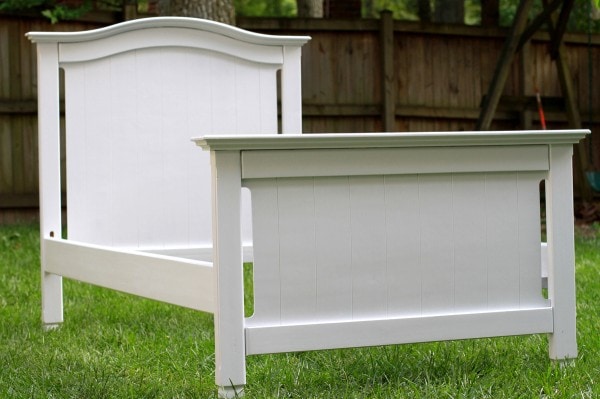
(take that, people-who-say-SEO*-is-the-most-important-thing ever. That right there happened without me researching a single keyword.)
*SEO is Search Engine Optimization, a process of writing in a way that search engines like. Which is a lovely concept except when it gets in the way of writing in a way that people like. So, I just write for people, and hey, it turns out that search engines like that too sometimes!
Anyway.
A lot of people find my blog through that post, and since it’s so highly-trafficked, I get a lot of questions about the painting process. So, I though it might be smart to make a painting FAQ post.
Do you put a topcoat on your pieces?
Thus far, I haven’t. However, none of the pieces I’ve painted have been super-duper heavy traffic pieces, like a kitchen table. If I were to paint something like that, I would definitely put a coat of varnish on.
You can find brush-on varnish at any home improvement store, and it comes in a variety of sheens. So, if you were anxious about varnish because you were thinking it would give your lovely matte paint job a cheesy sheen, worry not! You can get very low-gloss varnish.
Can I follow your instructions if my furniture isn’t exactly, uh, wood?
That depends.
If your pieces is laminated with a thin piece of real wood, you can totally paint it! Just be careful not to get too crazy with the sander, because you’ll go through the laminate and hit particle board.
If your piece is fairly sturdy and has kind of a fake wood finish on it, you can probably paint it. You’ll want to use a light hand with the sander, though (just enough to evenly scuff the shiny surface). Be forewarned that the paint probably won’t stick quite as well to this sort of surface. I painted a desk of this sort, and I’ve had to retouch some areas of it. That rarely happens with my real wood pieces.
If you’ve got a super-cheap, flimsy pieces of furniture that appears to be particle board with a thin foil/plastic finish, the steps I outlined probably aren’t right for you. You could maybe try using some spray paint and primer that’s meant for non-wood surfaces, but the brush-on paint I use wouldn’t be a good choice.
Where can I find good, cheap furniture to paint?
Freecycle is my very first recommendation. Why? Well, for starters, everything there is free. And when you’re painting a free piece of furniture, there’s very little pressure on you…if you mess it up, at least you didn’t waste any money on it!
I’ve gotten loads of great wooden furniture from freecycle. Just make sure to ask if the piece is real, solid wood. If you’re going to go to the effort of painting it, you want to be certain you’ve got real wood on your hands.
Craig’s List is also a great resource. That’s where I got this awesome wooden bed with drawers underneath it (plus a nightstand!) for $50. Schweet.
Your local thrift stores will also probably have some pieces worth painting.
The key, I think, is to have a good imagination when you’re looking at an old piece. You really have to visualize the way it will look with a coat of paint, and the more pieces you rehab, the easier it will be for you to see the potential in something really ugly.
Why didn’t my finish come out nice and smooth like yours?
The most common culprit is thick coats of paint. You want each coat to be very, very, thin. This takes more time, yes, but it’ll get you a smooth, durable finish.
You also need to make sure to use long brush strokes. If possible, go from one end of the piece to the next before lifting up your brush.
Make sure each coat is thoroughly dry before you add another one…slightly tacky paint will pick up the texture from your brush.
Also, your paint might be too thick. My last can of Painter’s Touch paint was on the thick side, so I added some paint thinner to make it a bit more soupy. If your paint has sat for a while since the last use, it’ll probably need some paint thinner.
Lastly, if you used paint and primer that are different than what I recommended, that could change your results.
Will you paint my dresser/bed/table?
I’m so honored that a number of you have asked this, but I’m sorry to have to say no. Painting furniture is a bit of a time-consuming process, so I’d have to charge an arm and a leg to make it worth my while.
Plus, I’m most passionate about this when I’ll get to own the refinished piece, so I don’t think I’d be inspired enough to paint furniture for other people!
____________________________
Do you have any great furniture painting tips to add to mine? Share in the comments!
And feel free to add a question if you’ve got one.
____________________________
Psst! Learn how to make Nanaimo Bars over at Baking With Lisey.
Joshua’s 365 post: Alien

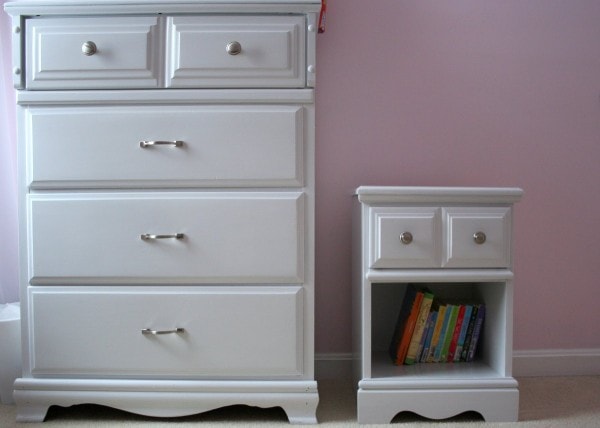
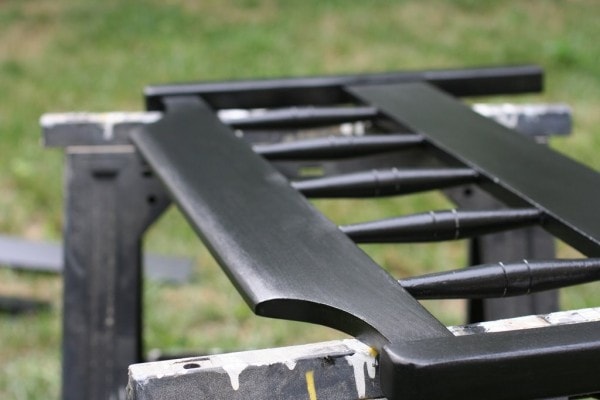
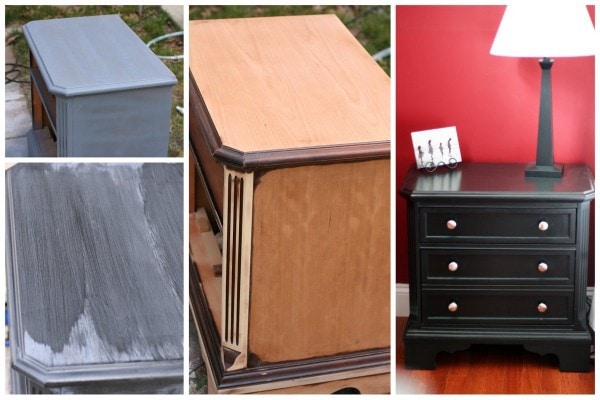
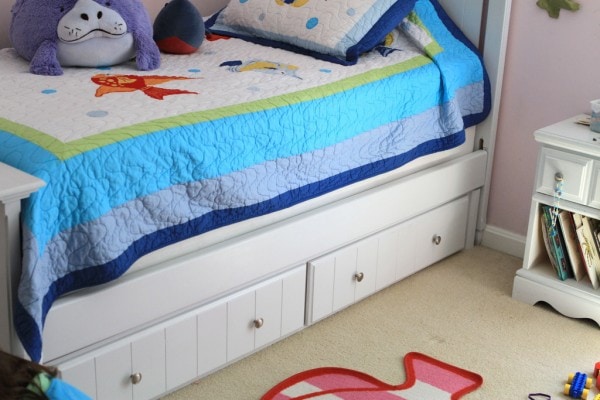
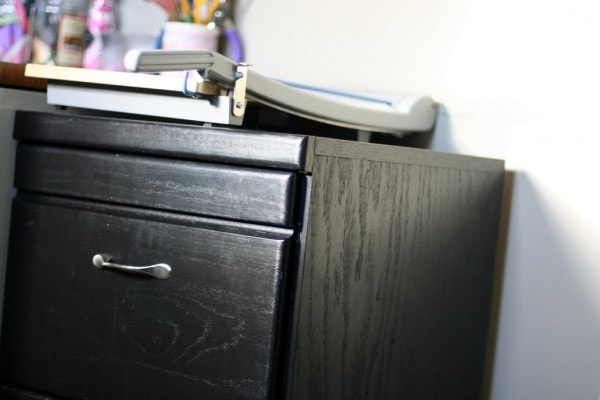

Linda Stroup
Sunday 18th of August 2013
I painted a dresser brown. I didn't like the finished product and asked my paint dealer if I paste waxed it would it add depth. It had no texture. She told me to wait 4-6 weeks. Do you find that necessary? Do you like painting with brown paint? I don't think I'll do another one in brown.
Kristen
Monday 19th of August 2013
I've never used brown before. Are you wanting a glossier finish than what you've got?
Sue
Wednesday 17th of July 2013
Kristen, Great website! I like the idea of repurposing items and giving them a fresh look. I am currently in the process of painting an oak dining room set your favorite color - black! I was going to go with a black satin, but after checking your website reconsidering a black semi gloss - my only concern is that it will look too "shiny" - your advice please on what finish to go with? Thanks!
Chippy
Thursday 23rd of May 2013
This is fab for a beginner. Quick Question: What Type of brush? Do you ever use a roller?? Thanks!!🌼
Kristen
Thursday 23rd of May 2013
I use a medium-grade brush, and I've never used a roller. Most rollers will leave a stippled surface, and I prefer the clean look of a brushed finish.
anna chan
Sunday 7th of April 2013
Thank you for the painting how to, you made the steps very simple and easy to follow. What do I do if there are gouges/deep scratches on a piece of furniture? Do I fill it with wood putty before or after I start sanding?
Kristen
Sunday 7th of April 2013
Yep, I fill mine after I sand. Once the filler dries, you can sand it down to be even with the rest of the surface and then you can prime and paint.
Sandy
Wednesday 3rd of October 2012
I read that you can use a primer made for painting wood so you don't have to sand it. Do you know if it really works?
Kristen
Wednesday 3rd of October 2012
I have not used a product like that, so I can't say for sure. However, I'd be a little bit wary of it...my gut tells me that the finish wouldn't hold up as well that way.
It might work ok on a piece that doesn't get a lot of traffic, though, like a picture frame.